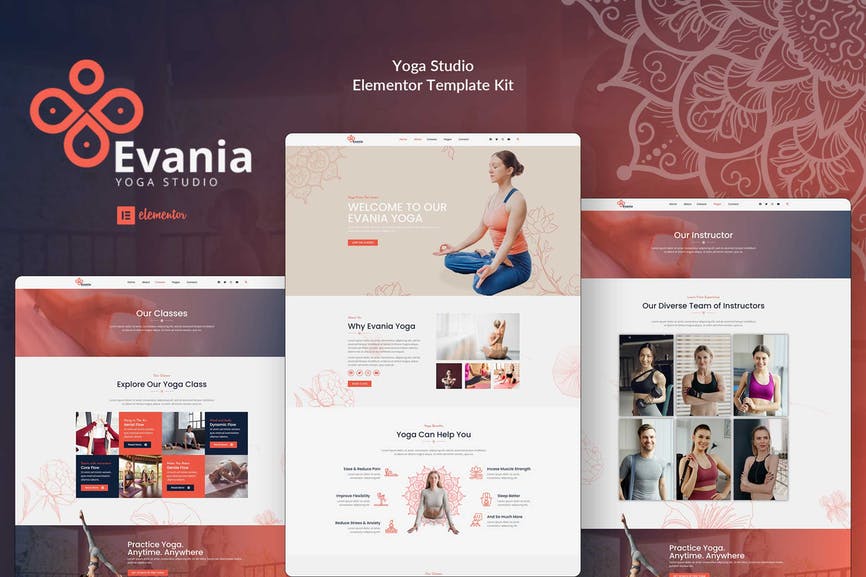In today’s digital age, a robust online presence is essential for businesses and the cost to build a website in the UK. A well-designed website serves as a crucial gateway for connecting with customers, establishing credibility, and driving growth. When venturing into website development, understanding the associated costs, including the specific considerations of cost to build a website in the UK, is a pivotal first step. This financial awareness ensures that investments align with business goals, contributing to a successful online venture. Costs encompass domain registration, hosting fees, web design, content creation, and ongoing maintenance, emphasizing the need for businesses to gain a nuanced understanding of website development costs in the UK.
For businesses in the United Kingdom, recognizing that the cost to build a website in the UK extends beyond the creation of an online platform is vital. The financial commitment includes various elements such as domain registration, hosting fees, web design, content creation, and ongoing maintenance. Gaining a nuanced understanding of website development cost in the UK is paramount for making informed decisions that align with unique business goals, ensuring sustained success in the online landscape.
Table of Contents
Types of Websites

The cost of building a website can vary significantly based on the specific purpose and features tailored to meet these varied needs. Let’s delve into different types of websites, each serving distinct objectives and influencing the overall cost of development:
Simple Business Website:
Purpose: Primarily informational, offering details about the business, its services, and contact information.
Features: Basic pages such as Home, About Us, Services, and Contact.
Cost Consideration: Generally more affordable due to simpler design and fewer advanced functionalities.
E-commerce Platform:
Purpose: Facilitating online transactions, selling products or services directly to customers.
Features: Product listings, shopping cart, secure payment gateways, and order management.
Cost Consideration: Higher due to the complexity of integrating e-commerce functionalities and ensuring a secure online shopping experience.
Portfolio Site:
Purpose: Showcasing a collection of work, projects, or achievements.
Features: Image or video galleries, project descriptions, and a visually appealing design.
Cost Consideration: Variable, depending on the level of customization and interactivity desired.
Blog or Content-based Website:
Purpose: Sharing informative content, articles, or blog posts.
Features: Content management system, article archives, and potentially interactive elements like comments.
Cost Consideration: Moderate, with an emphasis on content creation and organization.
Community or Social Networking Site:
Purpose: Building a community, fostering user interaction and engagement.
Features: User profiles, forums, messaging systems, and potentially user-generated content.
Cost Consideration: Higher due to the complexity of building and maintaining interactive features.
Landing Page or Single-Page Website:
Purpose: Conveying a concise message or promoting a specific product or service.
Features: Single-scroll design, focused content, and a strong call-to-action.
Cost Consideration: Generally more affordable, suitable for specific campaigns or promotions.
Educational Website or E-learning Platform:
Purpose: Providing educational content, courses, or training programs.
Features: Course modules, quizzes, user progress tracking, and interactive learning elements.
Cost Consideration: Higher due to the integration of educational tools and features.
Understanding the nuances of these website types is crucial when estimating development costs. Businesses should carefully assess their goals and choose a website type that aligns with their specific needs and budget constraints. You may visit Digit Web Ltd for a free consultation on the category your business or organization fall into.
To Build a Website in The UK Costs Breakdown

Delving into a comprehensive breakdown of the costs associated with building and maintaining a website provides valuable insights for businesses in the UK. The following breakdown offers a closer look at the specific costs involved, catering to different types of websites:
Domain Registration:
Cost Range: £10 to £20 per year
Description: The initial step in establishing a web presence involves securing a domain name. This annual expense ensures your unique web address.
Domain Registration:
Cost Range: £10 to £20 per year
Description: The initial step in establishing a web presence involves securing a domain name. This annual expense ensures your unique web address.
Hosting Fees:
Cost Range: £50 to £200+ per year
Description: Hosting services provide the server space to store your website files and make it accessible online. Costs vary based on the hosting provider and the level of resources required.
Web Design:
Cost Range: £500 to £5,000+
Description: Design costs depend on the complexity of the website. A simple business site may have lower design costs, while e-commerce platforms or intricate portfolios may require a more extensive design investment.
Content Creation:
Cost Range: £100 to £1,000+ per page
Description: Developing engaging and informative content is crucial. Costs vary based on the type and volume of content needed. E-commerce sites, for instance, may incur higher costs due to product descriptions and images.
E-commerce Integration:
Cost Range: £1,000 to £10,000+
Description: For businesses aiming to sell products or services online, integrating e-commerce functionalities incurs additional costs. This includes setting up a secure payment gateway, shopping cart, and product management features.
Maintenance and Updates:
Cost Range: £500 to £2,000+ per year
Description: Regular maintenance, security updates, and ongoing content management are essential for a website’s longevity. Costs vary depending on the complexity of the site and the frequency of updates.
Additional Features and Plugins:
Cost Range: Variable
Description: Depending on the website’s functionalities, additional features and plugins may be necessary. For example, a blog may require a content management system (CMS), which can incur additional costs.
SEO Services:
Cost Range: £300 to £1,500+ per month
Description: Investing in Search Engine Optimization (SEO) is vital for enhancing a website’s visibility. Costs for ongoing SEO services vary based on the level of optimization required.
Educational Tools (for Educational Websites):
Cost Range: £2,000 to £10,000+
Description: Educational websites may incur additional costs for features such as interactive learning tools, progress tracking, and multimedia content.
Social Networking Features (for Community Sites):
Cost Range: £1,000 to £5,000+
Description: Building and maintaining community or social networking features, such as forums and messaging systems, can contribute to overall costs.
Factors Influencing Website Costs
Website development costs are influenced by several key factors that businesses should carefully consider when planning their online presence. The intricacy of design plays a pivotal role, with more complex and visually engaging designs incurring higher expenses compared to simpler layouts. The functionalities and features desired for a website also impact costs, with advanced features such as user accounts and search functionalities contributing to higher development expenses.
Customization needs, such as tailoring the website to align with specific branding requirements and layout preferences, add to the overall expenditure. For businesses engaged in online sales, the integration of e-commerce functionalities introduces additional complexities, including setting up secure payment gateways and managing product catalogs, contributing to higher costs. Ensuring mobile responsiveness, a critical factor in the mobile-centric era, involves additional expenses but is essential for providing an optimal user experience across various devices.
The choice of a Content Management System (CMS) for dynamic content, scalability considerations for future growth, and implementation of robust security measures are additional factors influencing development costs. Adhering to industry-specific compliance standards and regulations may also contribute to the overall expense. Finally, the integration of third-party services or plugins to enhance functionality can impact costs based on the complexity and compatibility of these integrations. Exploring these factors provides businesses with a comprehensive understanding of the nuances that contribute to website development costs, enabling them to make informed decisions aligned with their specific needs and budget constraints.
Hidden Costs and Considerations
When formulating a budget for your website development, it’s imperative to proactively account for potential hidden costs that are often overlooked but can significantly impact your overall expenditure. One commonly underestimated area is the inclusion of additional features or plugins. While these elements can enhance the functionality and user experience of your website, their integration may incur extra development costs. Businesses should carefully assess their specific needs and prioritize features to avoid unnecessary expenses, ensuring that each addition aligns with the overall objectives of the website.
Another critical aspect to consider in your budget planning is ongoing maintenance. Websites require continuous updates, bug fixes, and content adjustments to stay relevant and secure. Allocating resources for regular maintenance is essential for the sustained performance and longevity of your site. Failing to factor in these ongoing needs can lead to unforeseen costs down the line. It’s advisable to establish a clear plan for post-launch maintenance and allocate budget accordingly to avoid disruptions and ensure the seamless operation of your website.
Robust security measures are paramount in today’s digital landscape, yet they are often underestimated in terms of their financial implications. Investing in top-notch security protocols, SSL certificates, and regular security audits is crucial for safeguarding user data and maintaining trust. While these measures may incur upfront costs, they are a fundamental part of responsible website ownership. By being aware of these often overlooked aspects, businesses can plan their website budget more accurately, ensuring that the final cost aligns with their strategic goals and delivers long-term value.
There are some websites that will save you from hidden cost, like updates which you will be taught on a video tutor at the end of the website design as an inclusive service in the package. You can visit such website here

Hiring a Website Developer in the UK
In the selection process, businesses should prioritize a developer or agency that aligns with their specific goals and industry requirements. By considering factors such as expertise, experience, and previous work samples, alongside the illustrative example of Digit Web Ltd, businesses can make informed decisions that positively impact the success of their website projects. The agency’s commitment to delivering tailored and visually striking websites positions Digit Web Ltd, as an exemplary choice for those seeking expert designers to elevate their online presence.
Tips for Cost-Effective Website Development
In the pursuit of cost-effective website development without compromising quality, practical tips can guide businesses toward a budget-friendly approach. An optimal choice for such endeavors is Digit Web Ltd, renowned for its expertise in utilizing open-source platforms like WordPress, providing scalable and feature-rich solutions for long-term cost savings.
Digit Web Ltd excels in leveraging cost-effective strategies, particularly in utilizing template designs. By incorporating well-crafted templates and customizing them to align with specific branding elements, the agency ensures visually appealing and functional websites without incurring high costs.
Prioritizing essential features is another cost-effective strategy emphasized by Digit Web Ltd. Focusing on functionalities aligned with business goals helps avoid unnecessary expenses, ensuring that each added feature contributes meaningfully to the user experience.
Digit Web Ltd’s commitment to responsive design further demonstrates its cost-effective approach. Developing websites that seamlessly adapt to various devices eliminates the need for separate designs, reducing development costs and enhancing the user experience across platforms.
In strategic content management, Digit Web Ltd’s proficiency in content management systems empowers businesses to handle routine updates independently, minimizing the need for extensive technical knowledge and reducing ongoing maintenance costs.
Digit Web Ltd’s approach to digital marketing integration optimizes websites for search engines, driving organic traffic and minimizing reliance on costly paid advertising. By adopting these strategies, businesses can ensure a high-quality, cost-effective website development with Digit Web Ltd, the optimal choice for excellence within budget constraints.
Conclusion
In conclusion, cost to build a website in the UK is a substantial investment, but understanding the costs involved and making informed decisions can lead to a successful online presence. By carefully considering the factors discussed in this article, businesses in the UK can embark on their website development journey with confidence.




